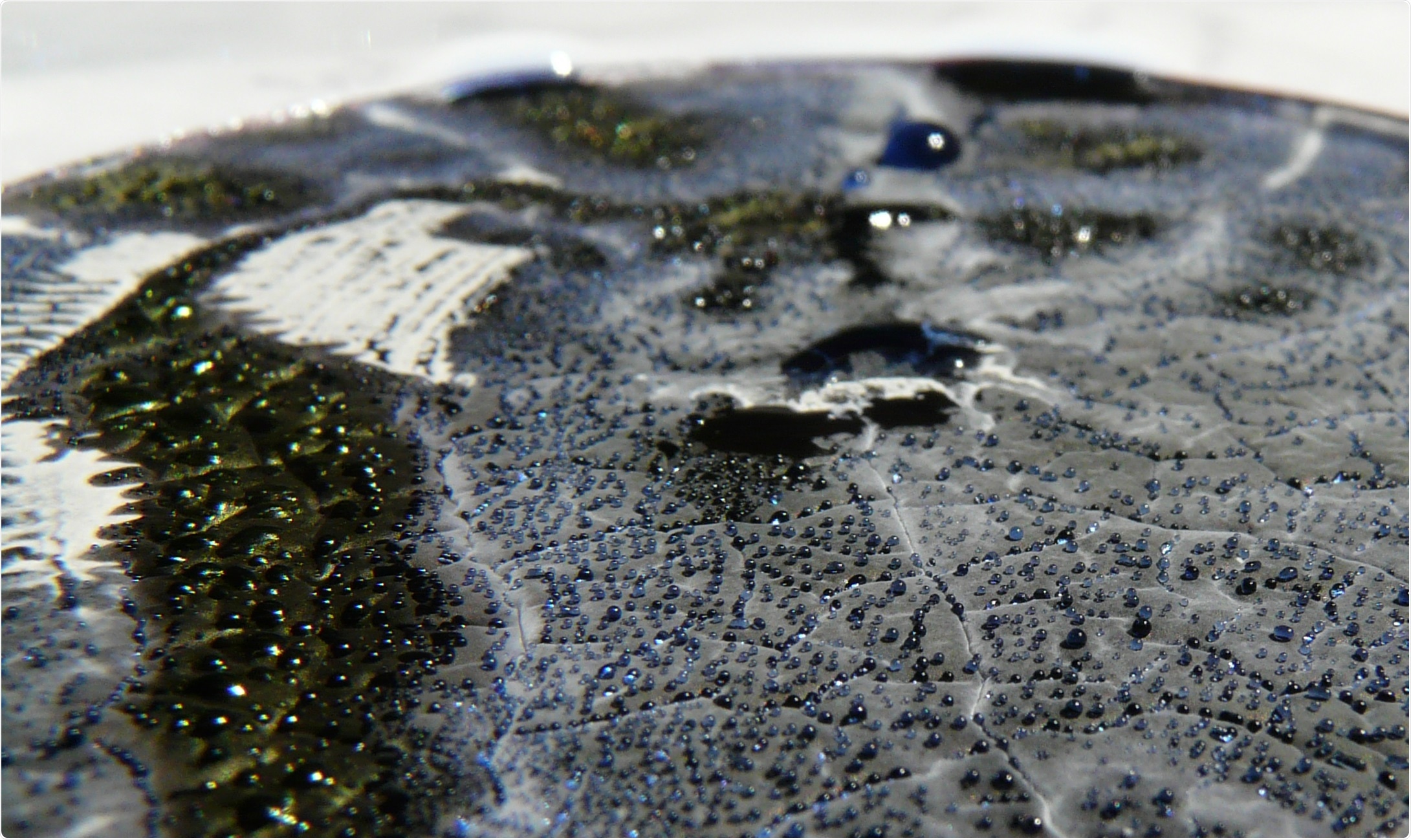Hormone-mimicking molecules that trigger the production of antibiotics in soil bacteria could present new opportunities for drugs that are right under our feet.

The soil-dwelling Streptomyces coelicolor bacteria producing antibiotics in a Petri dish. Image Credit: Christophe Corre.
Now, an international research team, working at the University of Warwick in the United Kingdom and Monash University in Australia, have established the molecular basis of a biological mechanism that may result in the more cost-effective and efficient development of present-day antibiotics, while enabling investigators to reveal novel antibiotics in soil bacteria.
This has been described in a new study recently published in the Nature journal on February 3rd, 2021.
The majority of the clinically used antibiotics are molecules that are created by microbes, like bacteria. Most of these are soil bacteria, known as Actinobacteria, which are grown in laboratory settings to extract the molecules produced by these microbes. But the synthesis of these molecules is often turned off in laboratory cultures, rendering them hard to detect.
Using small molecules similar to hormones, the bacteria closely regulate the production of their antibiotics. The researchers from the University of Warwick and Monash University studied a particular class of these bacterial hormones, called 2-alkyl-4-hydroxymethylfuran-3-carboxylic acids (AHFCAs) which they had discovered before to establish the type of role played by these hormones in regulating antibiotic production in the Actinobacterium Streptomyces coelicolor.
Then using single-particle cryo-electron microscopy and X-ray crystallography methods, the team examined the structure of a protein, called a transcription factor, attached to a specific region of DNA from the microbe. This inhibits the bacterium from creating the antibiotic.
The researchers then established the structure of the transcription factor using a synthesized model of one of the AHFCA hormones attached to it, which demonstrated how the DNA is discharged and antibiotic production is activated.
Antibiotic resistance is becoming a major issue and we urgently need new antibiotics to tackle it. We already know that similar processes control the production of a lot of commercially important molecules. If we understand the mechanisms that control the production of these compounds, we can improve the process, to make it more economically viable.”
Dr Chris Corre, Study Joint Lead Author and Associate Professor of Synthetic Biology, Departments of Life Sciences & Chemistry, University of Warwick
Dr Corre continued, “It turned out that although we were only looking at one particular class of hormones, the mechanism we found appears to be conserved across all of the different hormone classes in Actinobacteria.”
Actinobacteria are more complex than traditional bacteria. They are usually immobile just like other types of bacteria and have a complicated development cycle that is integrated with antibiotic production.
But when these bacteria are grown in pure culture, they will usually turn off the production of antibiotics, confounding researchers’ efforts to investigate them. By interpreting the molecular mechanism for how this process is regulated, investigators can turn on the production of novel antibiotics that are not created in laboratory cultures.
We can use these strategies to turn on production of new antibiotics in Actinobacteria. Among them, we'd hope to find some that could be useful for tackling infections caused by resistant microbes, as well as other diseases. These compounds would be hard to find via traditional processes.”
Dr Chris Corre, Study Joint Lead Author and Associate Professor of Synthetic Biology, Departments of Life Sciences & Chemistry, University of Warwick
The key to this finding was establishing the complex structure of the transcription factor attached to the DNA, which needed the use of single-particle cryo-electron microscopy facilities at Monash University to deal with challenges with X-ray crystallography.
Only a modest number of structures of this type of protein-DNA complex have been determined using x-ray crystallography over the last few decades due to the challenge of obtaining suitable crystals. By using cryo-electron microscopy we have circumvented this challenge, which should make it easier to determine the structures of similar complexes in the future.”
Greg Challis, Study Co-Lead Author and Professor, Department of Chemistry, Monash University
Challis has a joint appointment at the Department of Chemistry of the University of Warwick and Monash University,
“It wouldn't have been possible to illuminate the molecular basis for control of antibiotic production by these hormones without the combined expertise of colleagues at Warwick and Monash,” Professor Challis concluded.
Source:
Journal reference:
Zhou, S., et al. (2021) Molecular basis for control of antibiotic production by a bacterial hormone. Nature. doi.org/10.1038/s41586-021-03195-x.